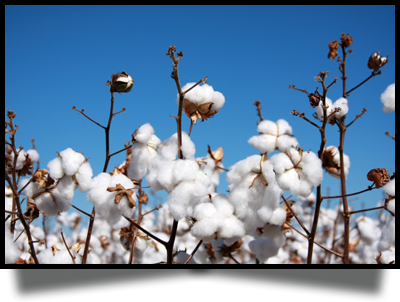
The Flower and Seeds of Kapok
Churchill & Smith uses premium grade A kapok, a natural silk fiber which requires no processing. It is a sustainable, natural and pesticide free product that is sourced from Hawaii, Central America, Burma, India. Kapok fibers are pulled from the seed pods of the majestic kapok tree. Kapok is a fluffy, silky yellowish fiber, similar in feel to milkweed or down. The tree itself is not cut down during harvesting, only the seed pods are removed and the fiber within is extracted.
Why We Use It…
Churchill & Smith uses kapok silk fibers in its products because of the many healthful benefits it provides. Kapok is soft, smooth, hygienic, non-toxic, hypoallergenic, and environmentally friendly.
Kapok gives you the feel of down but unlike down it holds its shape, does not compress down, and provides buoyancy for years to come.
Kapok is marveled for its unique ability to shape to the body then rebounding instantly to its original fluffy shape. It can be reused for generations, without developing mold or decaying. It’s resilient, lightweight and water resistant, which means it resists mold. It is a cool natural sleeping alternative to down because it is breathable and allows for air circulation.
Kapok is also naturally hypo-allergenic. After harvest, kapok is spun at a high rate of speed and air cleaned, leaving virtually no dust or pod debris. This makes kapok stuffing an excellent choice for environmentally sensitive individuals.
How We Use It…

In The Churchill & Smith pillows we use kapok as a portion of the precisely measured filling in our Patent Pending K-Lex natural blend. Along with latex, we have formed the perfect pillow fill. We have been on a lengthy quest to design, create, and manufacture the “perfect K-Lex pillow” and with the use of all natural kapok, we believe we have done just that!
About Kapok
Kapok/Capok fibre is one of the natural cellulosic fibres which grow on the kapok plant. It has a hollow body and a sealed tail, which are desirable features of candidates for functional textiles of this nature. However, the low volume weight of kapok is (specific density 0.29g/cm3), and the short length and smooth surface of the fibres, causing poor inter-fibre cohesion, have prevented kapok from being processed by modern spinning machines
Kapok ( Ceiba petandra ) is a tropical tree of the order Malvales and the family Malvaceae (previously separated in the family Bombacaceae), native to Mexico, Central America and the Caribbean, northern South America, and (as the variety C. pentandra var. guineensis) to tropical west Africa. Kapok is the most used common name for the tree and may also refer to the cotton obtained from its seed pods. The tree is also known as the Java cotton, Java kapok, Silk cotton or ceiba.
Harvest:
The leaves are shed during the dry season and flowers appear. The fruit of the Kapok tree turns into a capsule of about 20 cm length. The process of harvesting and separating the fibre is labour-intensive and manual.
Processing:
Kapok is a seed fibre similar to cotton. When the seed pods are opened, the fibres are removed and dryed in the sun. After that, seeds are separated, which can be done either by hand or machines.
Kapok consists of several parts :
A) Kapok Jacket
50% of the weight of kapok fruit. It is a light brown color and content a large amount of Potassium (K). The lye water is obtained by burning it to make white ash then poured it into water.
B) Kapok Fiber
A silky fiber obtained from the seed pods 16 – 18 % by weight of kapok fruit. The chemical constituents are the same as those of jute, but the proportions are different. Kapok is low in alpha cellulose 43% and high in pentosans 24%, lignin 15% and uronic anhidride 6,6% (iso 66%). Commonly it’s used for sleeping bed, sound and heat insulation and as stuffing for life jackets. cushions, furniture and toys.
To the naked eye, kapok fiber from the kapok tree species Ceiba Pentandra is yellowish and lustrous. The fiber feels silky and springy to the touch and relatively lightweight and warm in the hand. A bushel of kapok fiber appears consistent in color and quality. Unused Kapok fiber should be odorless.
Individual kapok fibers are 1 to 1.5 cm in length. Under a microscope, kapok fibers present a long narrow cell with frequent folds. Its cell has thin walls and a hollow structure. Its walls form a smooth, closed tube with a large cavity called a lumen. Each kapok fiber is coated with a waxy substance called cutine. The cutine and lumen are thought to give kapok its buoyancy. Chemically, kapok fiber consists mainly of cellulose, although also containing pentose-containing polysaccharides called pentosan and an inert plastice-like material called lignin.
Kapok fibre is a soft silky floss harvested from the pods of the kapok or ceiba tree. It is a sustainable crop, because the tree grows naturally and needs no pesticides or irrigation. The nature of the floss is that it is immune all pests including dust mites, which make it hypoallergenic. It is also repels water and moisture making it resistant to mould and mildew. The fibre itself can last for many years even after your pillow shell wears out, and does not need to be washed, just aired in the sun to cleanse and re fluff.
C) Kapok Seeds Pods : 7 – 8 % of the weight of kapok fruit.
D) Kapok Seeds : 25 – 28 % of the weight of kapok fruit
Take a look below at other ingredients used to make our products






